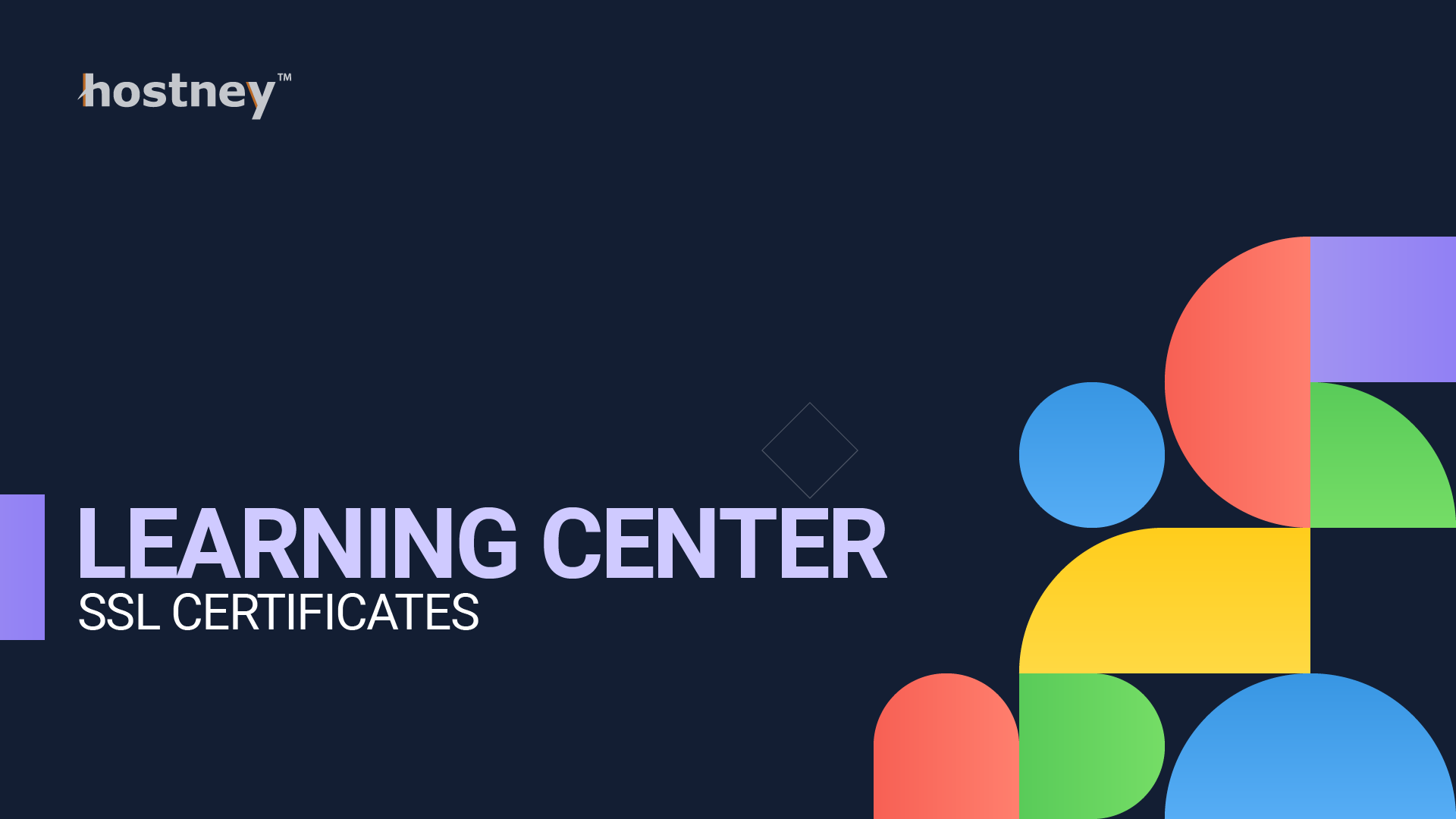
Table of Contents
Introduction
This comprehensive blog post provides an in-depth exploration of SSL certificates, ranging from their fundamental components to the complex process of securing online communication. By the end, readers should have a clear understanding of how SSL certificates work and their critical role in ensuring data security on the internet.
In today's digital age, security is of paramount importance. Whether you're shopping online, logging into your email, or browsing your favorite social media platform, you want your data to be safe from prying eyes. That's where SSL certificates come into play. Secure Sockets Layer (SSL) certificates are the backbone of secure internet communication, ensuring your information remains confidential and untampered with during transmission. In this comprehensive blog post, we will delve into the world of SSL certificates, demystifying the complex technology behind them and explaining how they work to safeguard your data.
1. Understanding SSL Certificates
In the digital realm, an SSL certificate is like an electronic identification card that authenticates the identity of a website and encrypts the data transferred between the user's browser and the web server. This encryption is vital because, without it, sensitive information such as passwords, credit card numbers, and personal data would be susceptible to interception by malicious actors.
The concept of SSL certificates dates back to the 1990s, with the first version of SSL developed by Netscape. It has since evolved into the more secure and robust Transport Layer Security (TLS) protocol. TLS ensures that the data exchanged between the client and server remains confidential and untampered with.
2. Components of SSL Certificates
SSL certificates consist of several key components:
Public and Private Keys
SSL uses a combination of public and private keys to establish secure communication. The public key is used for encryption, and the private key is kept secret and used for decryption.
Certificate Authorities (CAs)
CAs are trusted third-party organizations responsible for verifying the authenticity of a website's identity. They issue SSL certificates to entities (websites or businesses) after rigorous validation processes.
The Certificate Chain
A certificate chain links the website's SSL certificate back to a root certificate that is already trusted by web browsers. This chain of trust is crucial to ensure that the website's certificate is legitimate.
Types of SSL Certificates: DV, OV, and EV
SSL certificates come in various types, such as Domain Validated (DV), Organization Validated (OV), and Extended Validation (EV). The level of validation determines the extent to which the website owner's identity is scrutinized.
3. SSL Handshake Process
The SSL handshake is the initial process where the client and server establish a secure connection. It involves several crucial steps:
Initiating a Secure Connection
The client connects to the server and requests a secure connection.
Key Exchange: Public and Private Keys in Action
The server shares its public key with the client, which is used for encrypting the data. The client generates a session key and encrypts it with the server's public key. This session key is used for symmetric encryption, which is faster and more efficient.
Authentication: How Do You Know You're Talking to the Right Server?
The server's SSL certificate is sent to the client. The client verifies the certificate's authenticity using the CA's root certificate and checks that the server's domain matches the certificate.
Symmetric Encryption: Securing the Data Transmission
Once the client and server have agreed on a session key, symmetric encryption is used for data transmission. This encryption method ensures that data is safe from eavesdropping.
4. Role of Certificate Authorities (CAs)
CAs are essential in the SSL ecosystem as they validate the legitimacy of websites. They have specific validation processes for DV, OV, and EV certificates, with EV certificates requiring the most rigorous checks. Once a CA issues a certificate, it's added to a global database to indicate trust.
The trust model works through the distribution of root certificates to web browsers and devices. When a user connects to a website, the browser checks the website's certificate against these root certificates to ensure it's legitimate.
5. SSL Certificates in Web Browsing
In web browsing, users can easily identify secure websites through the padlock symbol in the browser's address bar. Browsers like Chrome and Firefox have built-in mechanisms to verify the authenticity of SSL certificates, and if there's an issue, they warn users.
HTTP Strict Transport Security (HSTS) is a web security policy mechanism that enforces secure connections to websites. This further ensures that users are protected from potential man-in-the-middle attacks.
Did you know that at Hostney, we provide free SSL certificates for your websites? We believe that website security should not be tied to the cost of website hosting.

6. Securing Email Communication with SSL
SSL certificates are not limited to web browsing; they also play a crucial role in securing email communication. Protocols such as POP3, IMAP, and SMTP use SSL/TLS to encrypt email traffic. When you configure your email client to use SSL/TLS, it ensures that your emails are transmitted securely between your device and the email server.
For an extra layer of security, some users and organizations use S/MIME certificates to encrypt and digitally sign their emails. This adds another level of assurance that the email's content has not been tampered with and that it was sent by the claimed sender.
7. SSL Certificates in E-commerce
In the world of e-commerce, SSL certificates are non-negotiable. They are fundamental in securing online transactions and protecting sensitive customer data. Without SSL encryption, online shoppers would be vulnerable to having their credit card information intercepted.
Online businesses often need to comply with the Payment Card Industry Data Security Standard (PCI DSS). One of the requirements for PCI DSS compliance is the use of SSL/TLS to protect cardholder data during transmission. SSL certificates not only keep customers safe but also boost trust and confidence, leading to higher conversion rates.
Trust signals, such as the padlock symbol and the use of EV certificates, can significantly impact a user's perception of a website's trustworthiness. In e-commerce, trust is a valuable asset that can directly affect sales.
8. Common SSL Certificate Challenges and Solutions
Even though SSL certificates are highly effective in securing online communication, they are not without their challenges. Some common issues include expired certificates, mixed content (HTTP and HTTPS resources on the same page), and certificate revocation.
These challenges can be mitigated by implementing proper certificate management practices, including automated renewal, content fixes, and prompt certificate revocation and replacement in the case of a security breach.
9. The Future of SSL: TLS and Beyond
As technology evolves, so do the threats to online security. The transition from SSL to TLS (Transport Layer Security) reflects the ongoing effort to improve the security of Internet communication. TLS is designed to address vulnerabilities in SSL and strengthen the encryption of data.
A significant future concern is the potential impact of quantum computing on current encryption methods. Quantum computers have the potential to break traditional encryption algorithms, which is why researchers are working on post-quantum cryptography to ensure data remains secure in a post-quantum computing world.
Conclusion
In conclusion, SSL certificates are the linchpin of secure internet communication. They provide a robust and essential layer of protection for data transmitted between users and websites. Understanding the components, the SSL handshake process, the role of CAs, and the challenges and future developments in SSL/TLS is crucial in navigating the ever-evolving landscape of online security.
Security is not solely the responsibility of website owners and operators; users must also be vigilant. By recognizing the signs of secure websites and following best practices for online security, individuals can play their part in maintaining a safer internet for all.
By continually evolving and adapting to new threats, SSL certificates will remain a cornerstone of digital security, ensuring the confidentiality and integrity of our online interactions.
Check out the Let's Encrypt project.
Not a customer yet? Would you like to try our website hosting services? You can sign up for a free 30-day trial to test out our offerings.